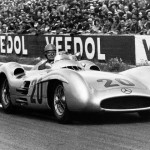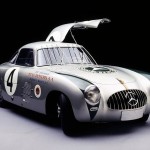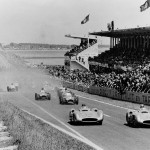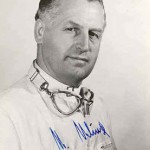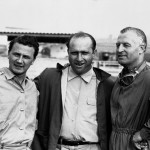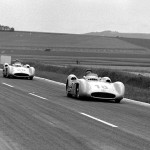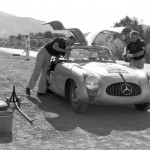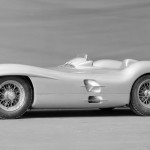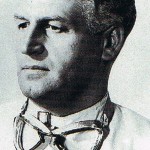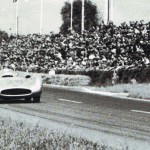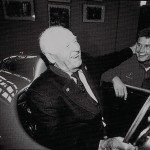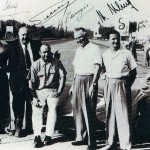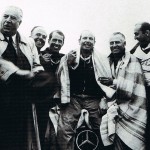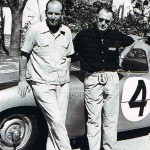Karl Kling: “I could tell a lot more stories”
Karl Kling never won a Grand Prix, but he may have been one of the most influential people in the history of Mercedes-Benz Motorsport. His greatest success was victory in the Carrera Panamericana in 1952 in a Mercedes-Benz 300SL, and that win opened the doors for Mercedes to return to Grand Prix racing in 1954, with Kling as team-mate to Juan Manuel Fangio. But like compatriot Hermann Lang, by then, Kling had lost the golden years of his career to the Second World War and Mercedes-Benz’s 15-year absence from racing.
Kling was a Mercedes man through and through, even up until he passed away in 2003, aged 92. I was fortunate enough to interview him at the Nurburgring in April 1996, and a more engaging and honest character you could not find – and just as passionate about the sport as it was that day as it was in his racing years. It was difficult to stop his memories coming. He may have been 86-years old at the time, but the spring in his step, and his crisp mind as he looked back over his career defied his years.
“I still love watching Formula 1, but today it’s easier for me watching on TV, because I can assess the drivers better,” he said. “Until 1990 I went to every Grand Prix in Europe, but now at home I can have a glass of wine and watch at my leisure.”
Mercedes returned to motorsport in 1954 after the 15-year war interruption, so Kling was already 44 when Mercedes resumed it’s racing programme, and the German was teamed with no less than Juan Manuel Fangio for the French Grand Prix at Reims with the “streamliner” aerodynamics of the all-enveloping W196. They qualified 1-2, and raced hard throughout before team orders took over, with Fangio the nominated winner, and they came home 0.1 sec apart – and one lap ahead of the rest.
Kling had very strong opinions of who he thought were the best drivers, but would not be drawn on who was the greatest, despite the quality of his team-mates over the years. “I would not presume to be able to do that,” he said, “and I don’t even think you can compare eras.” He did however admit to having a very high regard for Stirling Moss.
“Moss was very fast, and actually much better at setting up the car than Fangio,” Kling remembered. “Fangio tended to just drive it as it was. Stirling could drive any kind of car – touring cars, sports cars and so on. In the Mille Miglia, Fangio was not so good., and Moss was. I had a very good relationship with Moss. In fact, after the war, all the relationships between the Mercedes drivers were good.”
His answer begged the obvious next questions…. So before there were not good relationships? Do you mean the team orders?
Kling laughed, but kept his diplomacy. “At first Hermann Lang was not allowed to drive as fast as he could. You could write a novel about what went on in those times! Some would be flattered by it, some would not – but I’m not writing it…”
We changed the subject to the Mercedes boss Alfred Neubauer, and he became much more forthcoming. “Was he a genius on strategy, and motivating the drivers? Yes and no,” he said. “He stood there with his stopwatches, but the important man was Rudolph Ulenhaut. He would sit in the pits, a very quiet sort of person, and tell Neubauer, ‘now you have to refuel, now you have to change tyres – and now you have to change drivers!’
“Neubauer was good at promoting the company for sure. He would have made a very good actor.
“I could tell a lot more stories, but these people are not alive anymore,” he concluded, “and they should rest in peace…”
Sadly for us, Karl Kling died in 2003, and the gathering of racing legends upstairs grew by one more. It was a pleasure to have met him, shared his memories, and now to share them here 15 years later.

